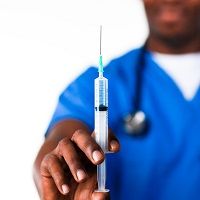Article
No Major Benefit to Stevens-Johnson Syndrome Patients Given Plasmapheresis Before IVIG Therapy
Author(s):
New research was conducted into treating Stevens-Johnson syndrome/toxic epidermal necrolysis patients with plasmapheresis before intravenous immunoglobulin therapy.

No obvious benefit was found in administering plasmapheresis prior to intravenous immunoglobulin (IVIG) therapy to Stevens-Johnson syndrome/toxic epidermal necrolysis (SJS/TEN) patients who did not respond to systemic corticosteroids, findings suggest.1
This study was set up to compare whether the outcomes of administering plasmapheresis first were preferable to those of administering IVIG therapy fist following systemic corticosteroid therapy that had proven to be ineffective.
This study was authored by Yuki Miyamoto, MD, MPH, from the Department of Emergency Medicine at Kyoto Prefectural University of Medicine in Japan.
“...to address these knowledge gaps, we used a Japan’s nationwide inpatient database to compare clinical outcomes of patients with SJS/TEN who were treated with plasmapheresis first with the outcomes of those who were treated with IVIG first, after both groups had been unresponsive to systemic corticosteroid therapy,” Miyamoto and colleagues wrote.
Background and Findings
The investigators conducted a retrospective, cohort study that utilized a national administrative claims database—called the Diagnosis Procedure Combination database—in Japan. The team’s database included over 1200 hospitals.
The research was conducted from 2010 to 2019, and the investigators’ study population was made up of hospitalized patients who had diagnoses of SJS/TEN. The researchers administered plasmapheresis and/or IVIG therapy to these patients.
The study participants were also prescribed at least 1000 mg per day of methylprednisolone equivalent systemic corticosteroid therapy within 3 days of their hospitalization. The team’s collected data was then analyzed from 2020 to 2021.
The team included the participants—given IVIG or plasmapheresis therapy within 5 days after their initial systemic corticosteroid therapy—in the IVIG group or the plasmapheresis-first group.
Overall, the investigators analyzed 1215 patients hospitalized with SJS/TEN that had been given a minimum of 1000 mg per day of methylprednisolone equivalent within 3 days of admission, with 53 patients in the plasmapheresis-first arm and 213 patients in the IVIG-first arm. They noted that the mean age of the patients was 56.7 years, and 57.1% of the participants were women.
After they conducted propensity-score overlap weighting, the investigators found there was not a statistically significant difference in inpatient mortality rates between the plasmapheresis-first and IVIG-first groups (18.3% versus 19.5%).
They did note that the plasmapheresis-first group had a longer average hospital stay of 45.3 days compared to the IVIG-first group, which ended up staying for an average of 32.8 days.
Lastly, the investigators noted that the plasmapheresis-first arm of the study incurred higher medical costs, with a difference of US $11,208 compared to the IVIG-first arm ($34,262 versus $23,054).
“The findings of this retrospective cohort study suggest that there is no significant difference in mortality rates between inpatients with SJS/TEN who received plasmapheresis first vs IVIG therapy first after ineffective systemic corticosteroid therapy,” they wrote. “Moreover, the findings suggest that patients with SJS/TEN who receive plasmapheresis therapy first may have longer hospitalization stays and incur higher expenses.”
References
- Miyamoto Y, Ohbe H, Kumazawa R, et al. Evaluation of Plasmapheresis vs Immunoglobulin as First Treatment After Ineffective Systemic Corticosteroid Therapy for Patients With Stevens-Johnson Syndrome and Toxic Epidermal Necrolysis. JAMA Dermatol. Published online March 08, 2023. doi:10.1001/jamadermatol.2023.0035.





